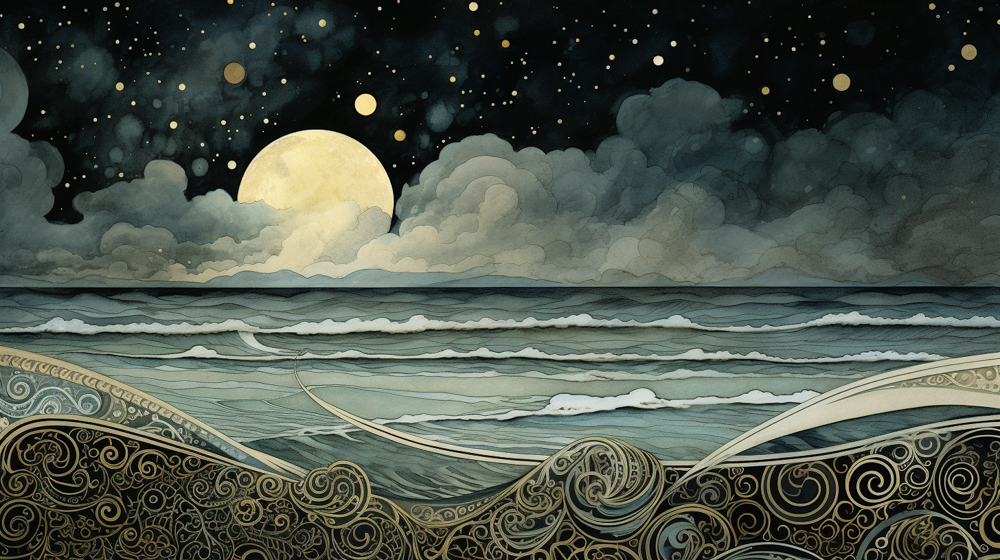
Mad in Pursuit Notebook
The Moon Teaches Me a Lesson or Two
(Your new word: AZIMUTH)
(...)
4 October 2023. When we lived in a condo, the panoramic window next to our bed faced south. I was always aware of the moon as it tracked east to west. I knew that every twenty-eight days, the moon would be full, with all its surrounding myths of madness. I would have a couple restless nights of sleep, not from the howling of wolves, but from the wattage of the moonlight in my eyes.
 I knew about the phases of the moon. And, despite being a Midwesterner, I knew that the pull of the moon caused ocean tides.
I knew about the phases of the moon. And, despite being a Midwesterner, I knew that the pull of the moon caused ocean tides.
Then we moved to the shore of Lake Ontario. I got interested in astrophotography. And the moon revealed her complexity.
Our cabin faces north-by-northwest and I resigned myself to losing my moon view—till one early winter morning I looked northwest and saw the full moon setting over the lake. What??
Sunset-watching on the lake had taught me that the sun sets farther north of east-west every day from the spring equinox till the summer solstice. Then the sunsets occur a little more south each day till they disappear from the lake with the fall equinox. I had known that the tilt of the Earth causes seasons. I'd had no idea that it had a daily impact on where to look for my sunsets.
Must be the same with the moon, right? But opposite—moonsets over the lake in winter.
I had already learned a new moon fact: Full moons rise at about sunset and set around dawn. New moons (the ones we can't see) rise around dawn and set around sunset, so they really belong to the daytime. I was born under a new moon, which means it really was a "moonless" night. The moon is not dark. It simply isn't there till dawn.
This is getting complicated.
My assumption that I'd start seeing winter moonsets over Lake Ontario got me all excited. But I was wrong. Where the moon sets (its azimuth) has nothing to do with the sun.
(Side note: imagine standing on a vast plain, the horizon is a 360° circle around you. North is at 0°. South is at 180°. West is 270°. If the sun or moon is setting directly west, its azimuth is 270°. Azimuth is the degree marking on your horizon.)
Where we see the sun setting on the horizon depends on the yearlong journey of Earth around it. But the moon's trip around Earth is just short of twenty-eight days. And the moon has her own axis tilt. And an eighteen-year cycle of... something, something. This is where my brain tilts on its own axis. This is where I wish I'd paid more attention to trigonometry class in high school.
Funny, isn't it? We change our vantage point and everything we took for granted reveals something new, something that makes us think. Hats off to those ancient observers who meticulously tracked the moon's behavior and did all the math. Personally, I consult my phone. If Accu-weather tells me the night sky will be clear and PhotoPills tells me the full moon is setting at 280°, I prepare to take a picture of its light reflecting on the lake.
I like new knowledge.
FOLLOW me on my Facebook page, share this post to your friends, and....
Books from Mad in Pursuit and Susan Barrett Price: KITTY'S PEOPLE: the Irish Family Saga about the Rise of a Generous Woman (2022)| HEADLONG: Over the Edge in Pakistan and China (2018) | THE SUDDEN SILENCE: A Tale of Suspense and Found Treasure (2015) | TRIBE OF THE BREAKAWAY BEADS: Book of Exits and Fresh Starts (2011) | PASSION AND PERIL ON THE SILK ROAD: A Thriller in Pakistan and China (2008). Available at Amazon.